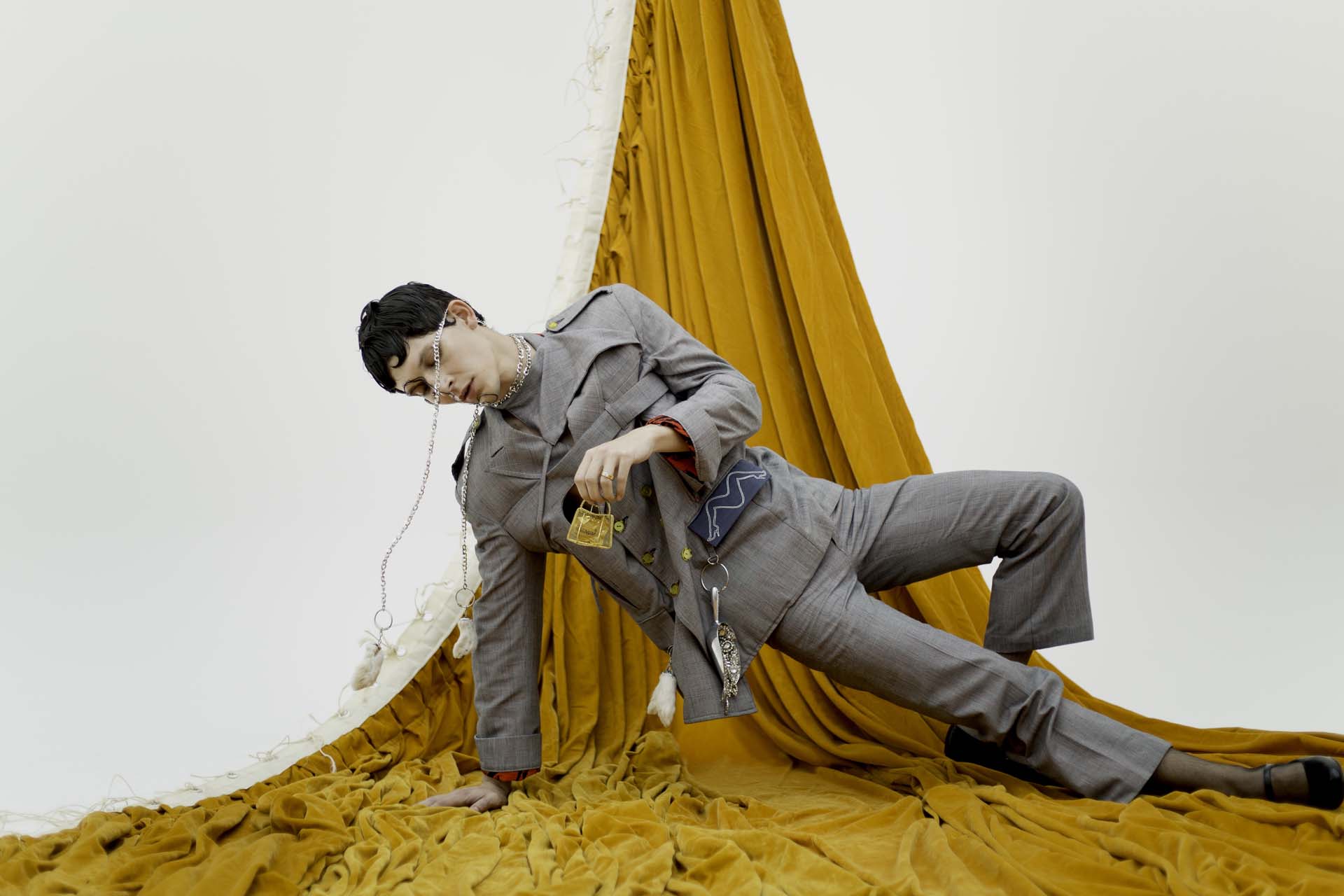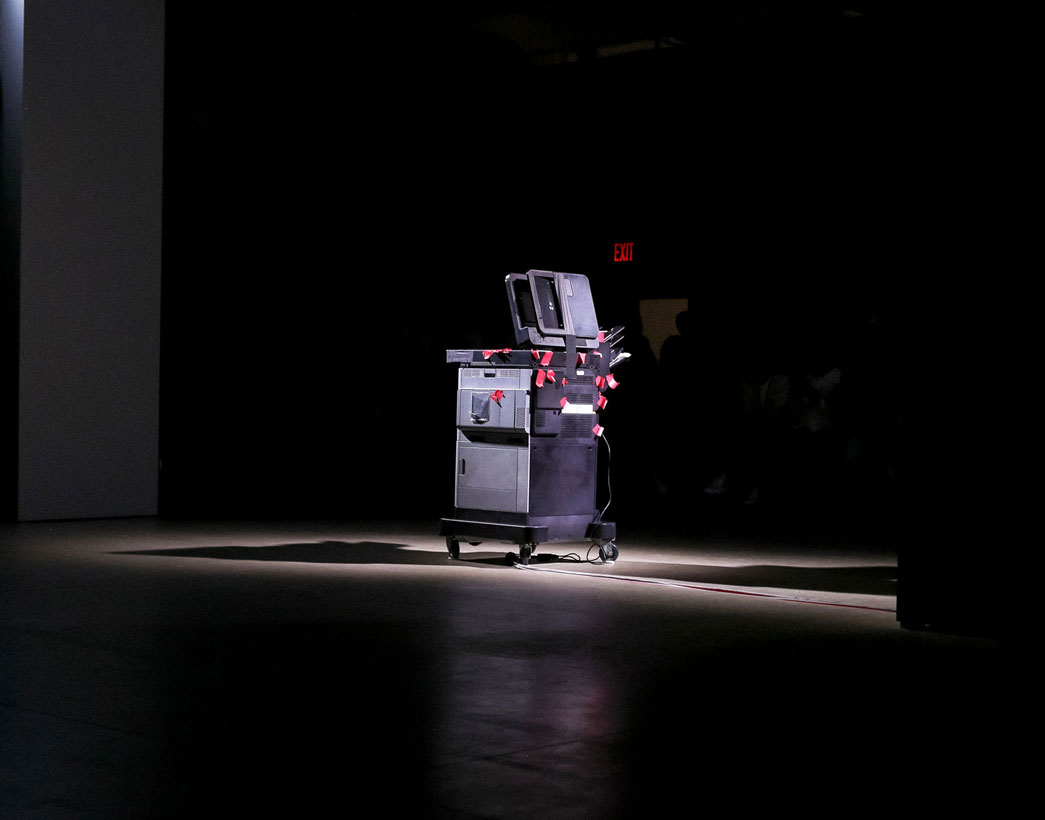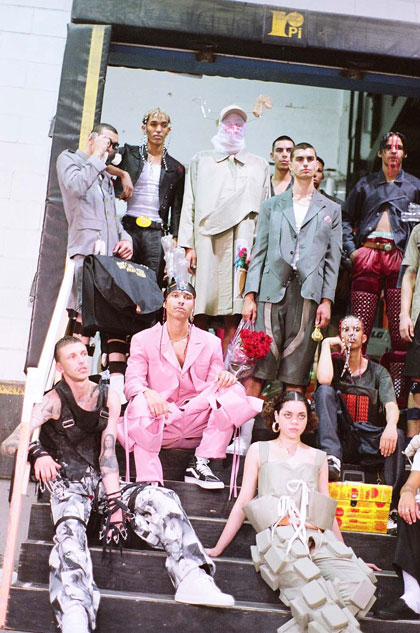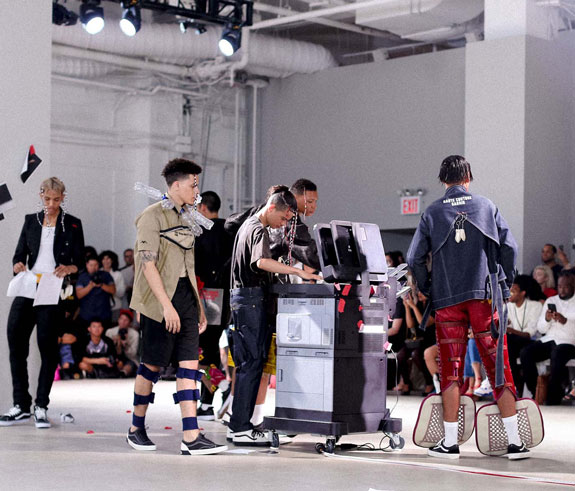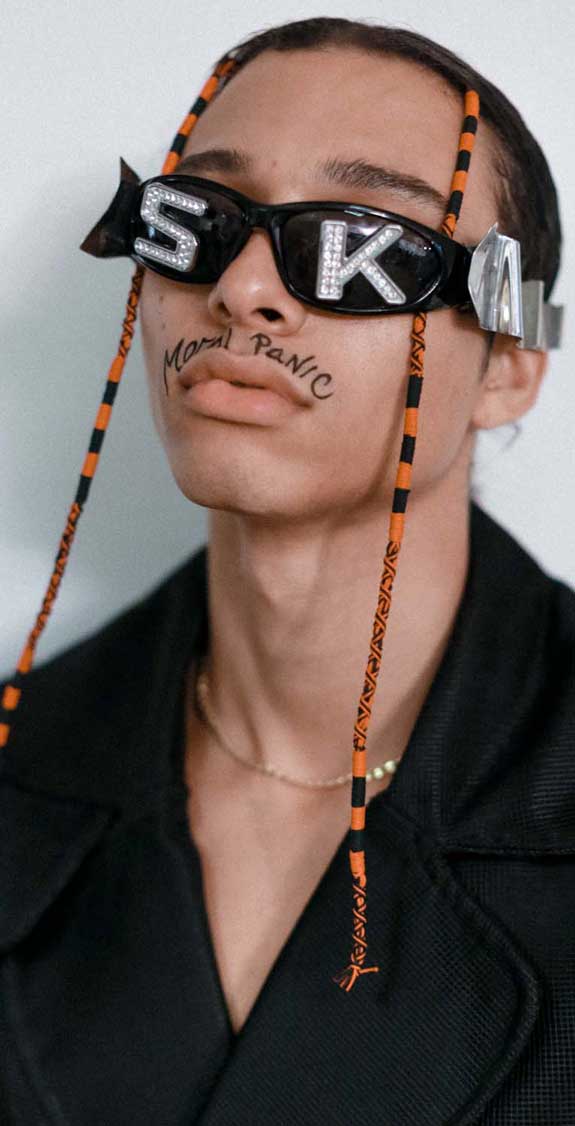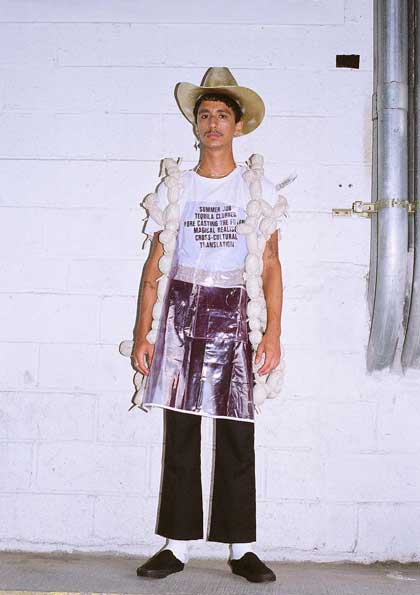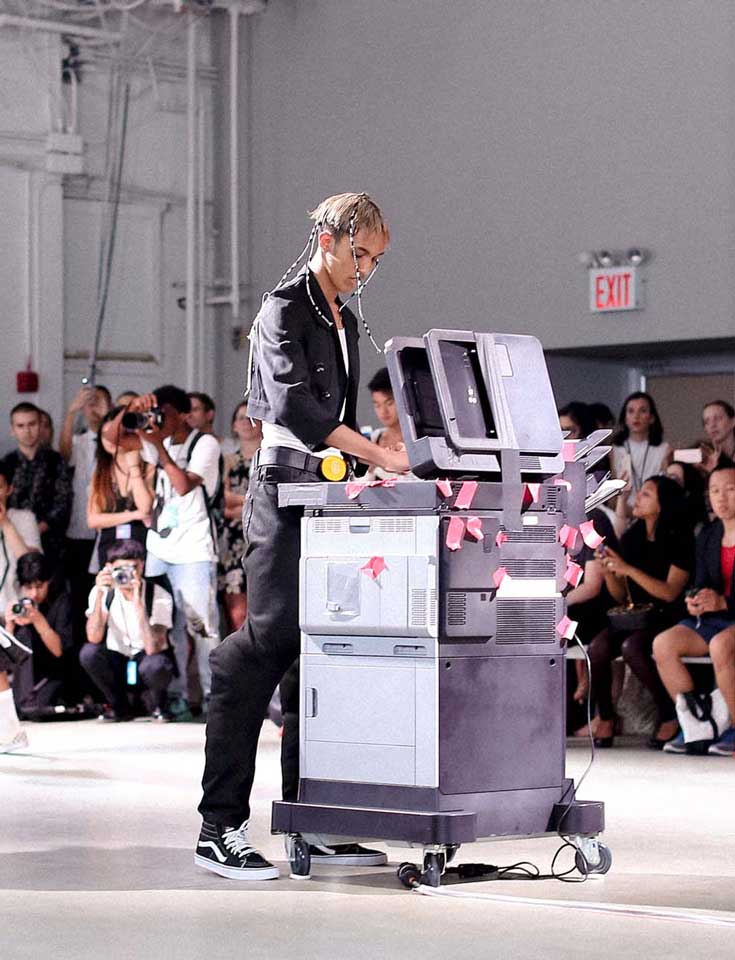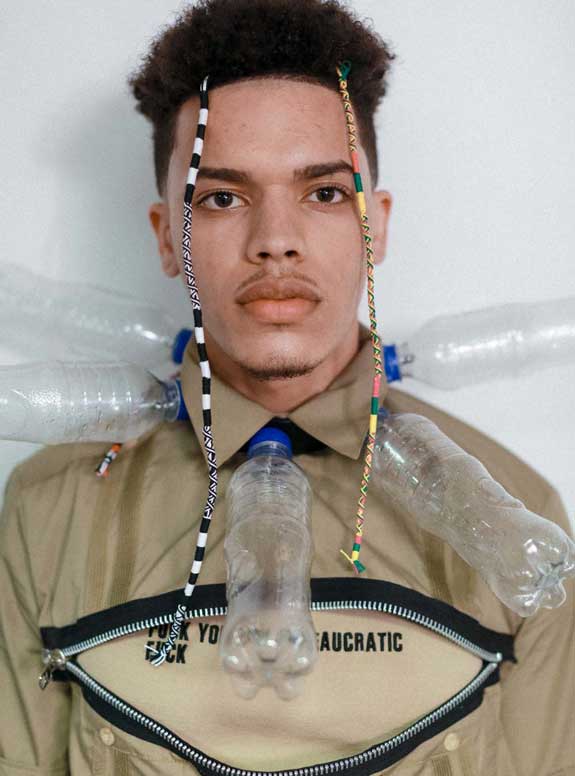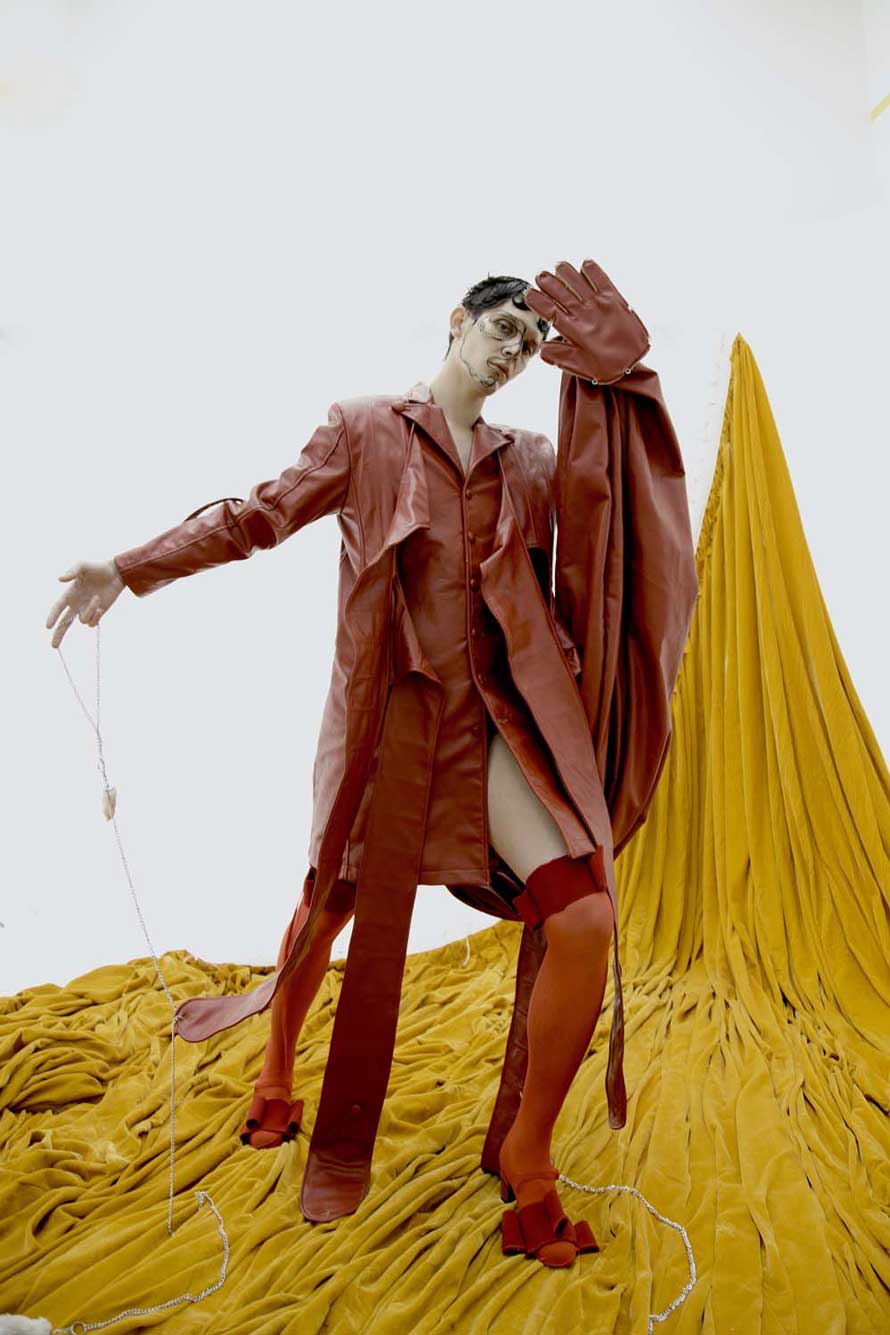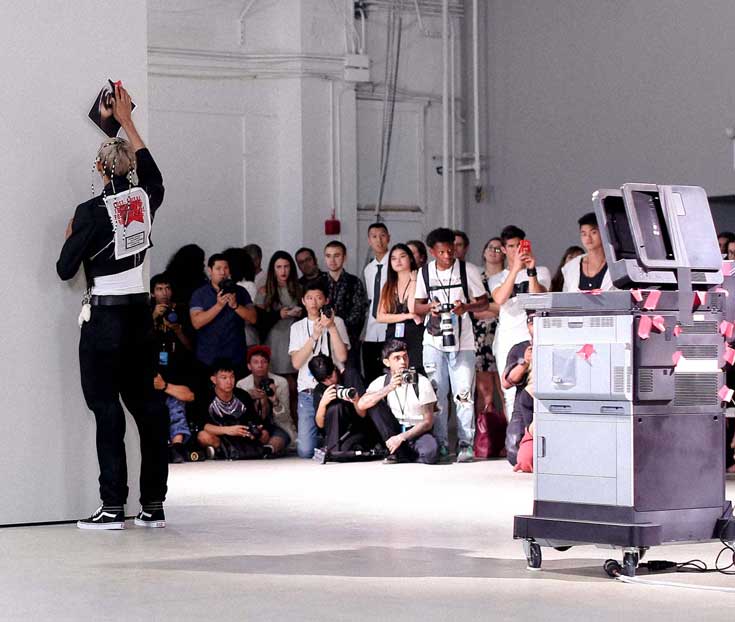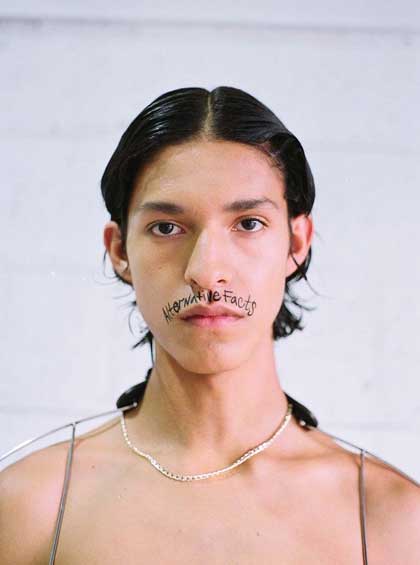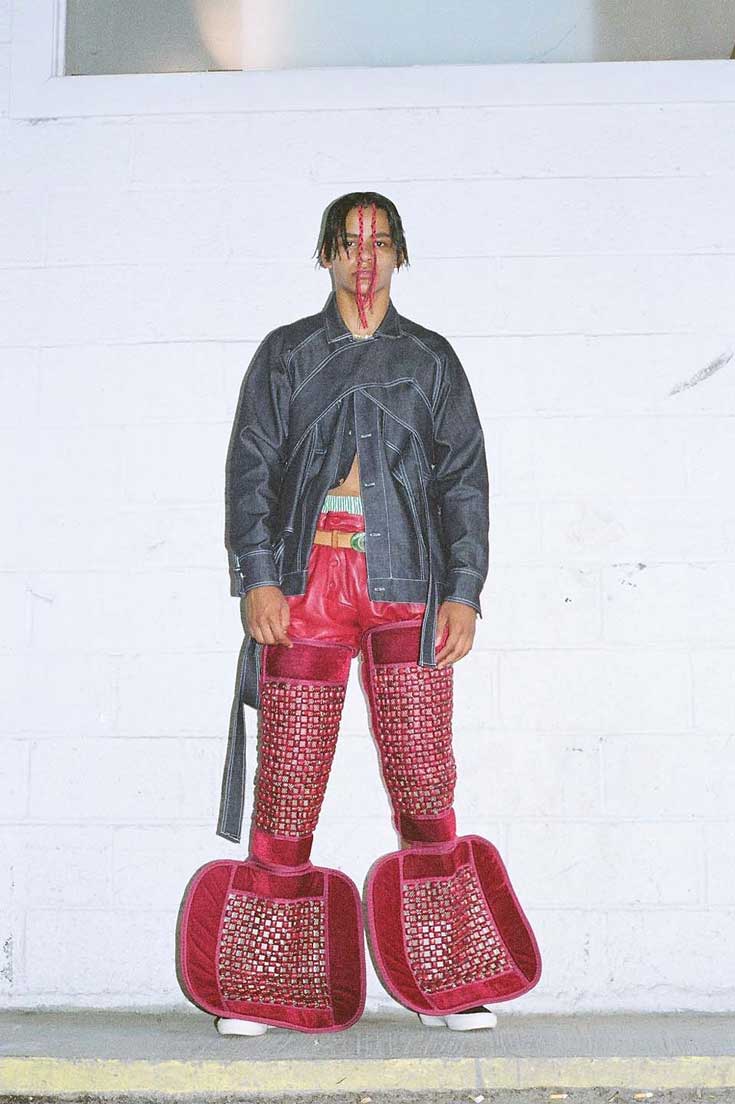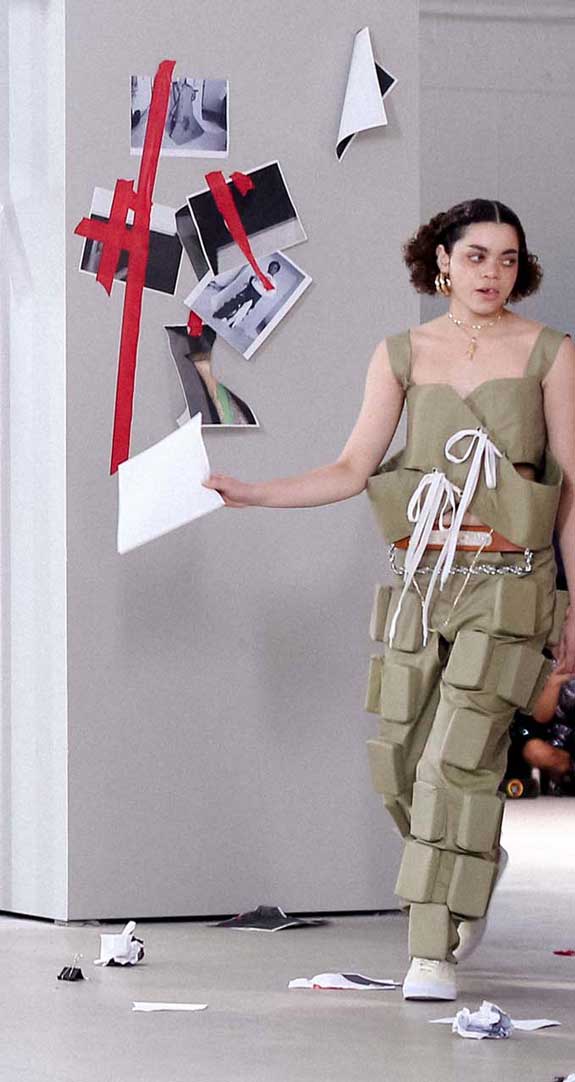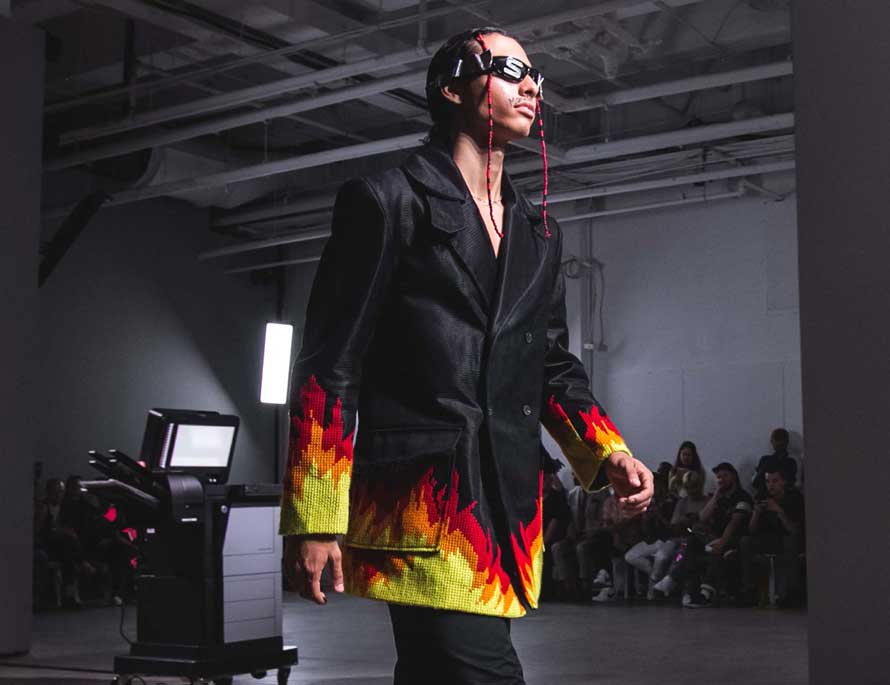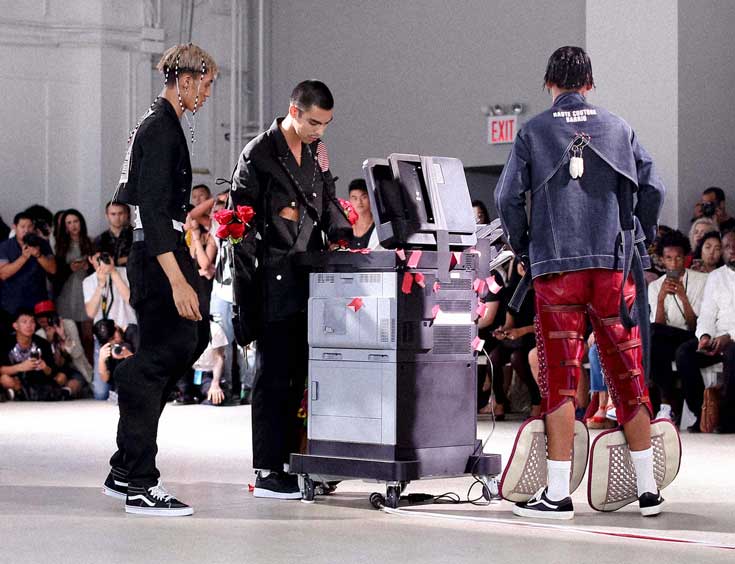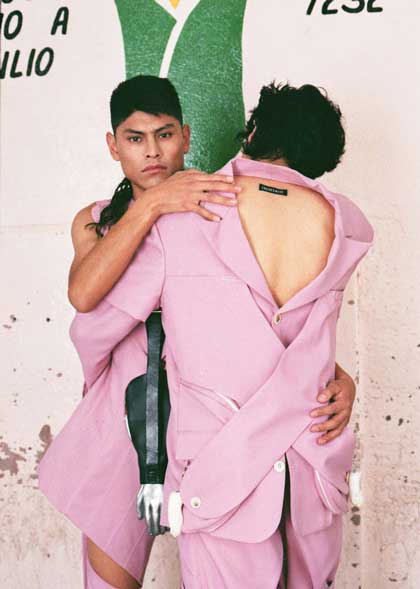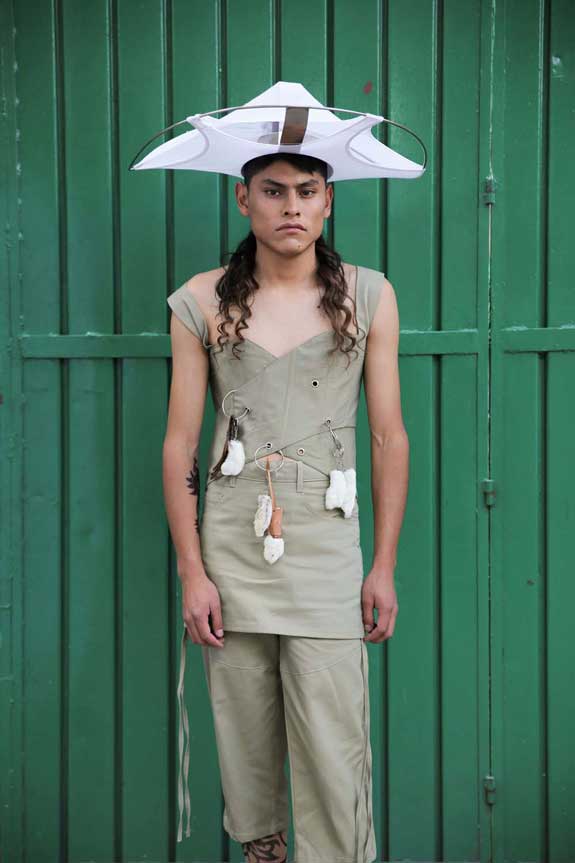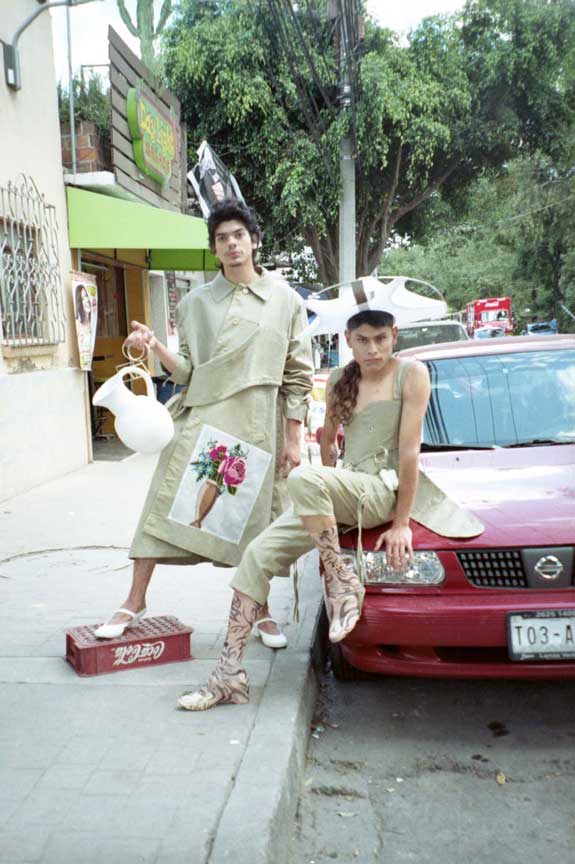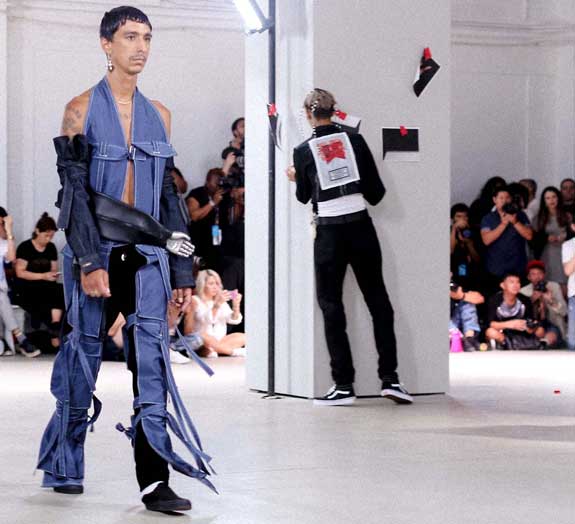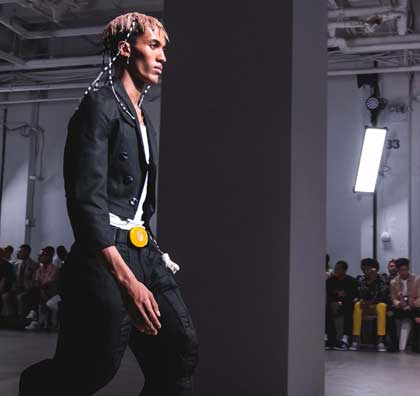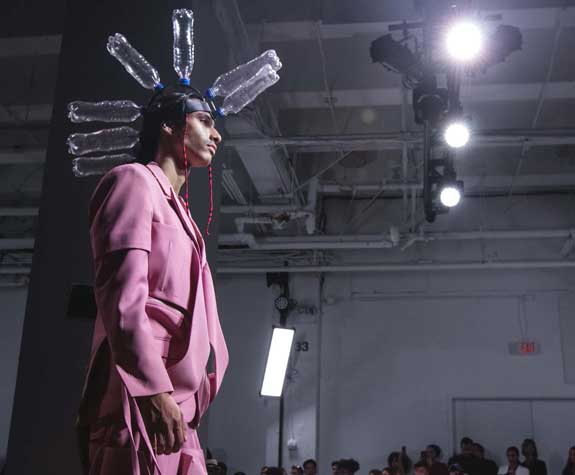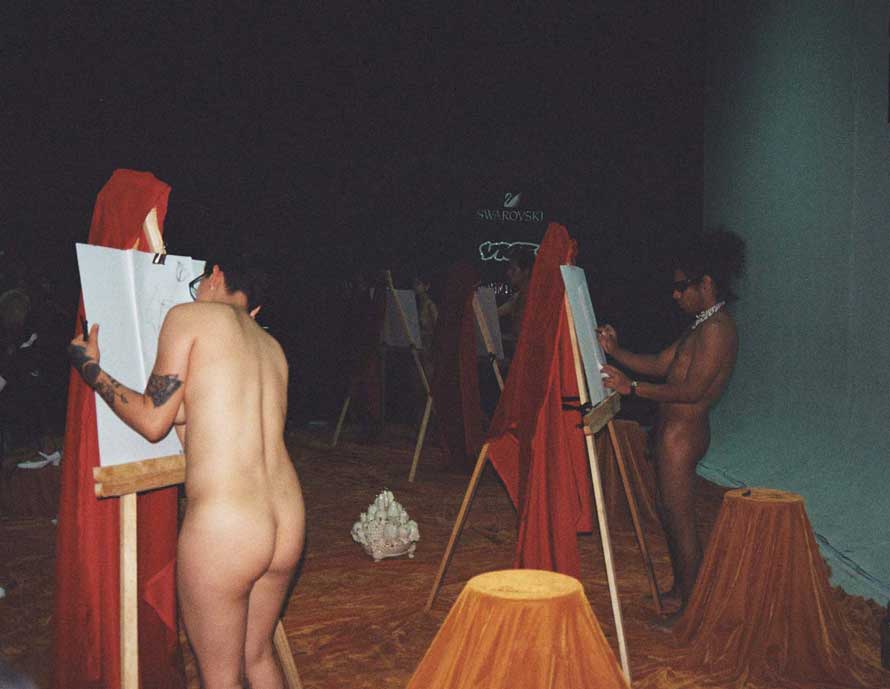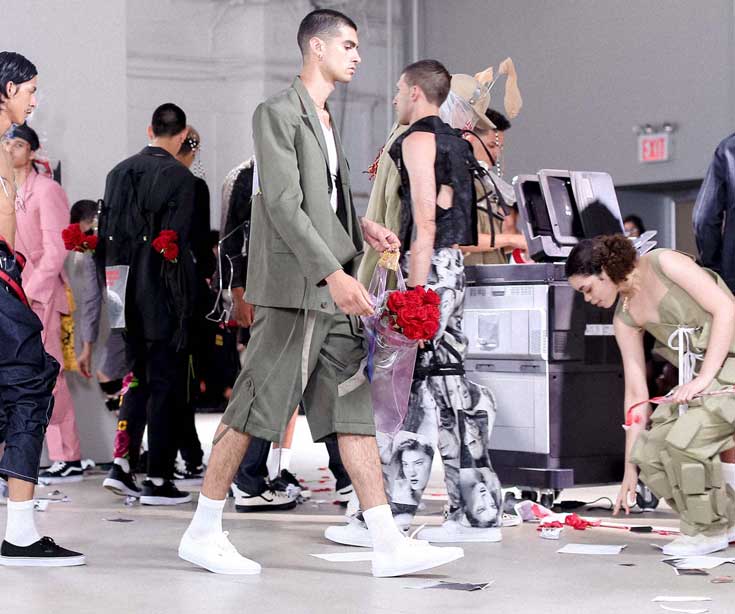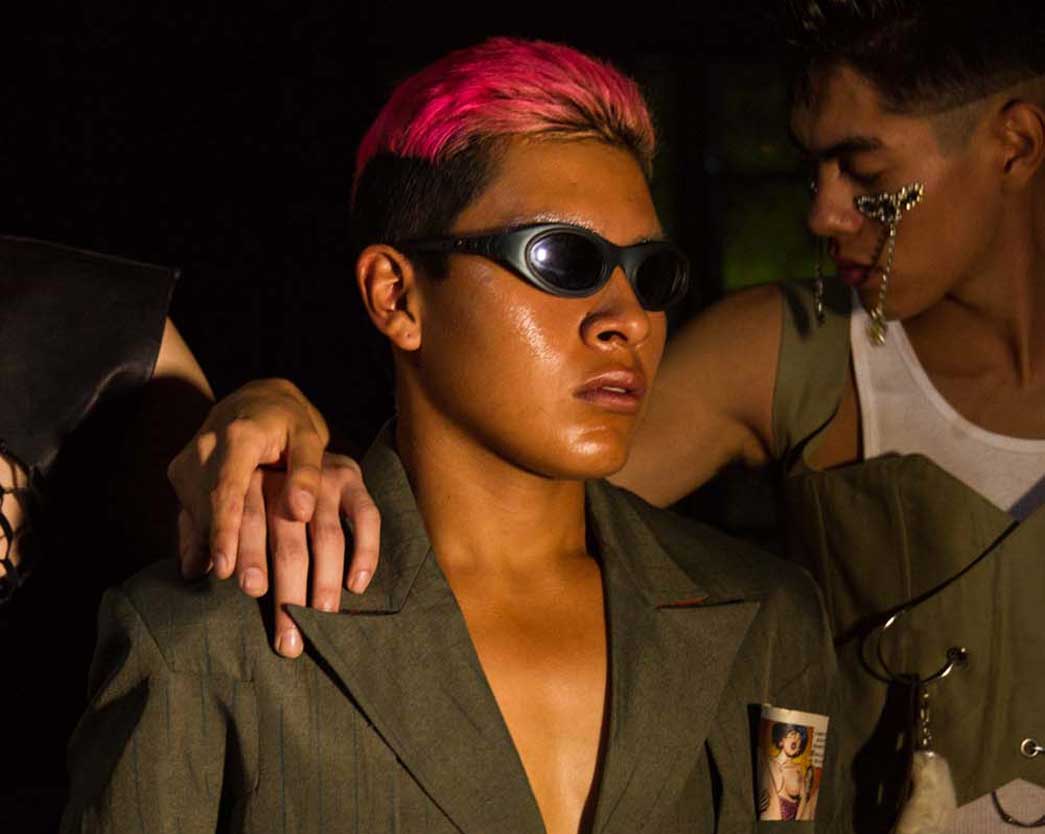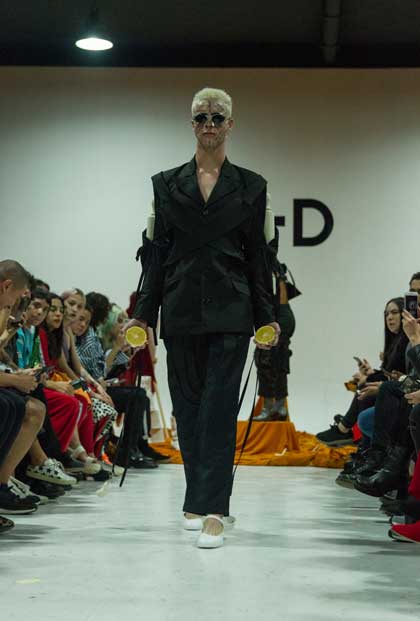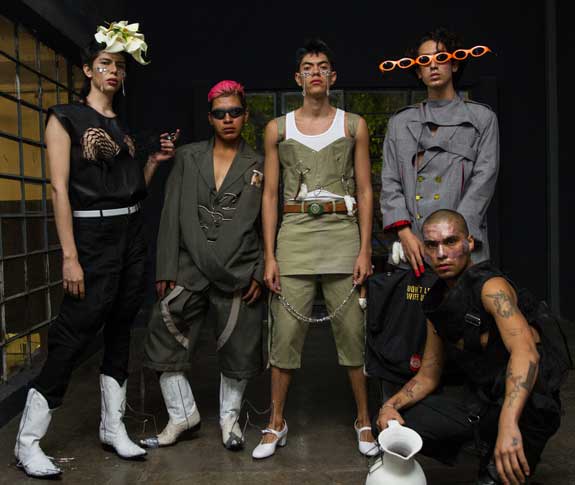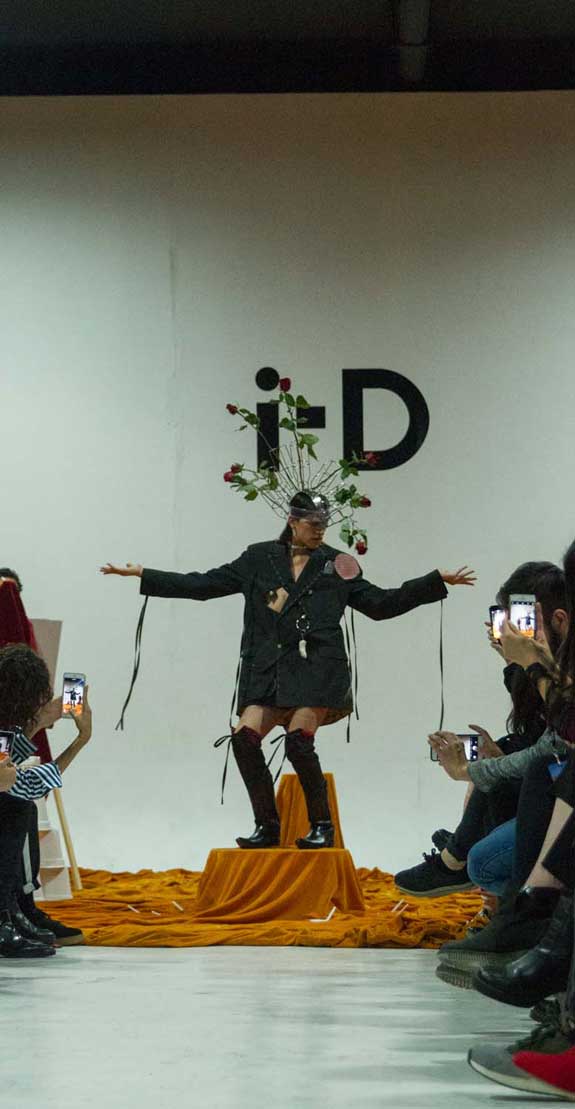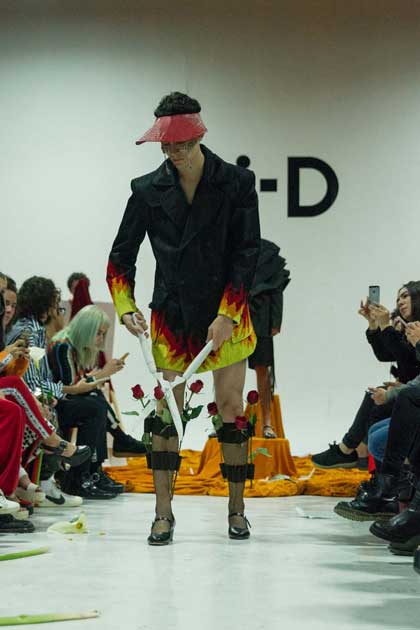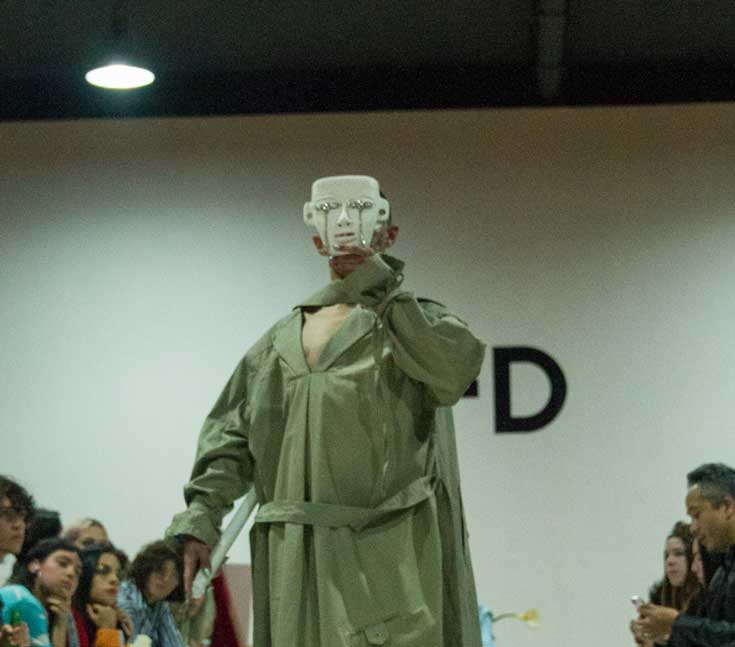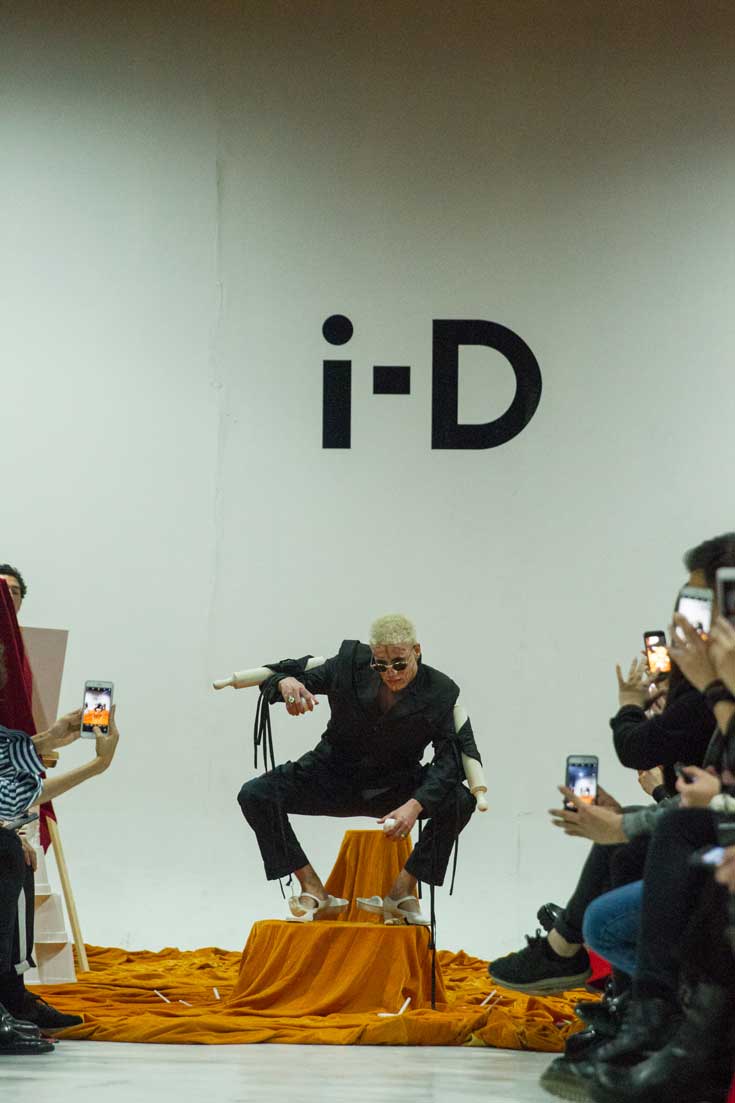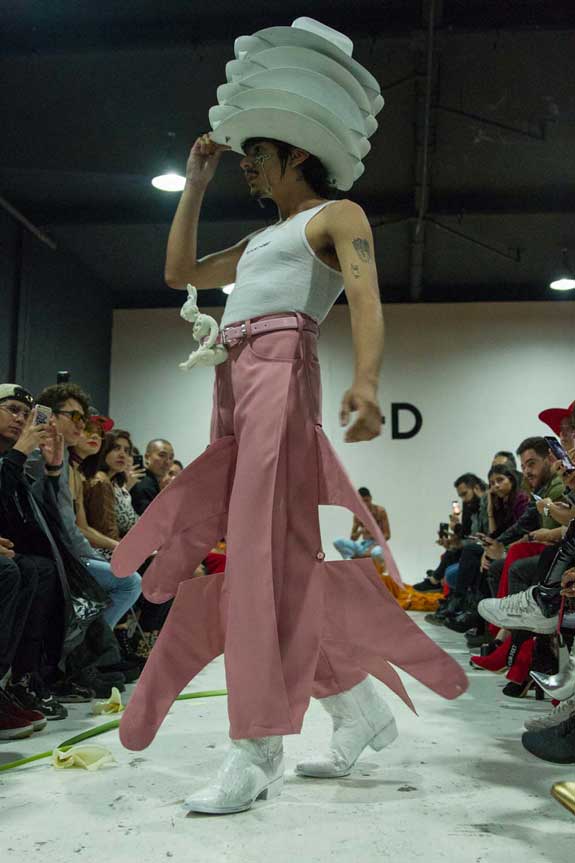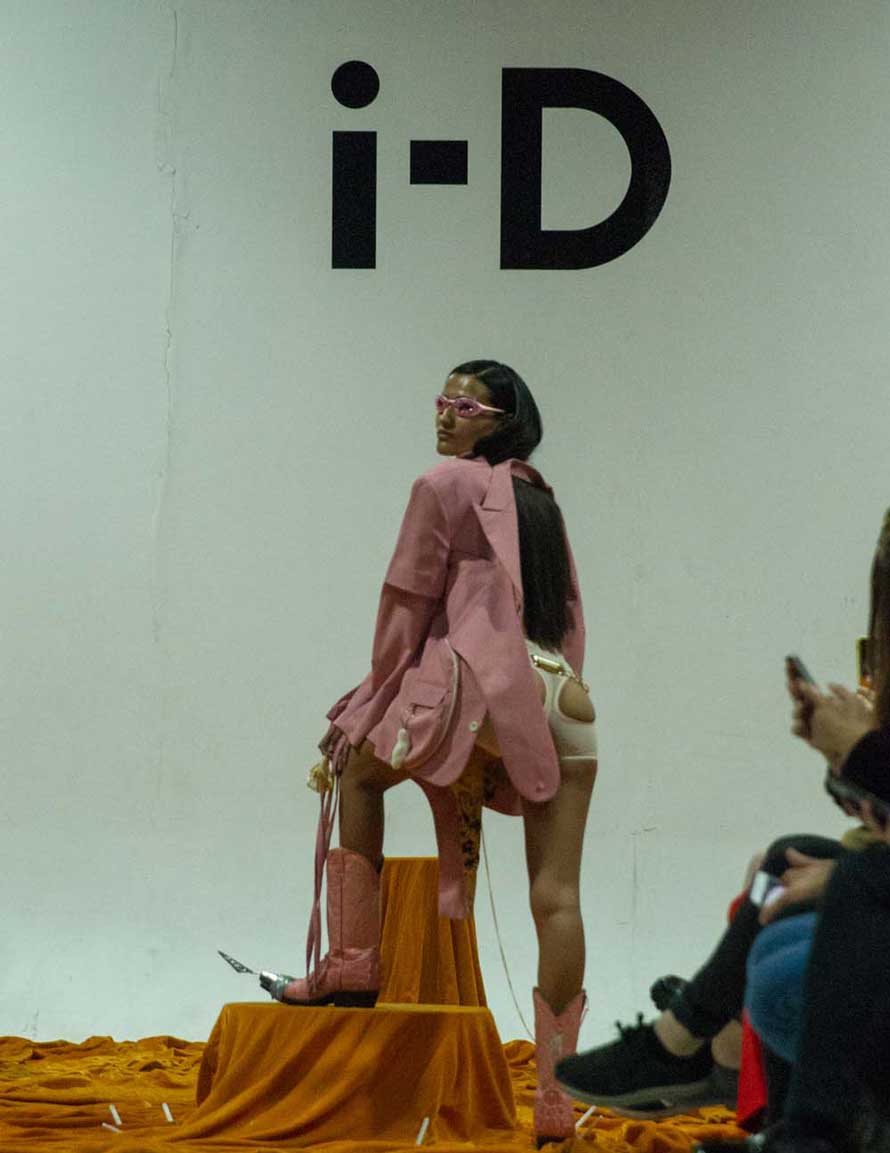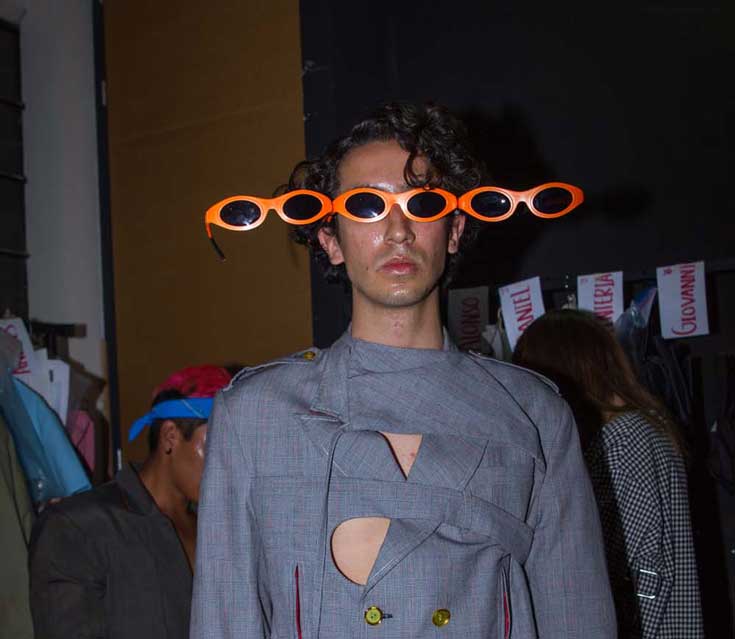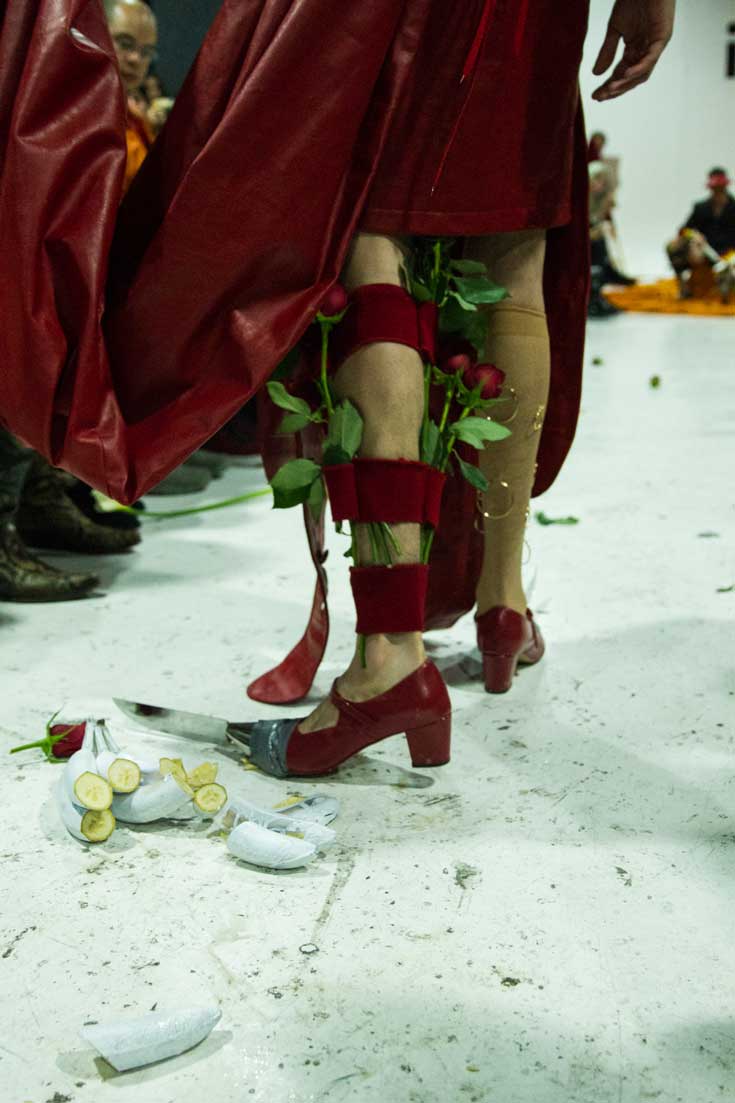This was Sánchez Kane’s second ever show in New York, debuting at New York Fashion Week by invitation from the CFDA Council of Fashion Designers of America, and they presented the SÁNCHEZ-KANE Spring/Summer 2018 collection. This marks the beginning of a complex, multi-layered arch that continues on the Vast Graveyard of the Missing presentation at the Institute of Contemporary Art in Los Angeles, and later in the Mercedes Benz Fashion Week in Mexico City.
In its New York iteration, the collection is heterogeneous and exuberant, rooted in many easily recognizable elements of Mexicanness: guayabera shirts, cacti, huge metal buckles, roses and embroidery. It is all mixed, however, with a hint of absurdism and a keen observance of the streets in big Mexican metropolises, especially of the way in which objects are displayed for their consumption. A model wears multiple hats stacked on their head, sitting as they would in a shop’s window; another wears a row of sunglasses, mimicking the way they are shown at bodegas and tienditas. There’s also a reverence for the intelligence of bootleg creativity: the many ways in which people put their creative juices to work in order to figure out how to hide the goods that need to get across the U.S.-Mexican border. Some of the models wear literal portable-water contraptions, with tubes that feed them the liquid directly; others wear their garments backward, as if they had left in a hurry. The styling of the show was rugged, more street-aware and less tailoring-centric —even though this presentation saw Sánchez Kane master the spiral, pin-wheel-inspired pattern full of curves and holes that would become a staple in her career.
The idea of the image as trace, a mark left behind, was also explored in the show in the form of a performance in which the models would photocopy themselves with a machine at the center of runway. This re-appeared in different form in the Mexico City iteration of the show, then re-titled as Beaux Arts Class with Sánchez Kane, in which five students from the local art school stood at the end of the runway, naked, waiting to paint the models traversing by. The styling and presentation of that show was more pop-friendly and it managed to re-contextualize the pieces from New York in a much more vulnerable, romantic fashion. Tailoring took a protagonic role, the models wore the delicate folklore dancing shoes from Sánchez Kane’s hometown of Mérida, and the props and accessories became softer too, flowers and fruit —elements that will also become recurrent in her work.
The constant cycle of re-using, re-cycling and re-signifying elements is central to Sánchez Kane’s work, as they are traversed by influences or events in her life, the pieces are allowed to take on new meanings. In this case, what started as a cutting retort to Trump’s discriminating comments about Mexicans, was able to become a comment about emotions and sentimentality, the vulnerability of the artistic process.

